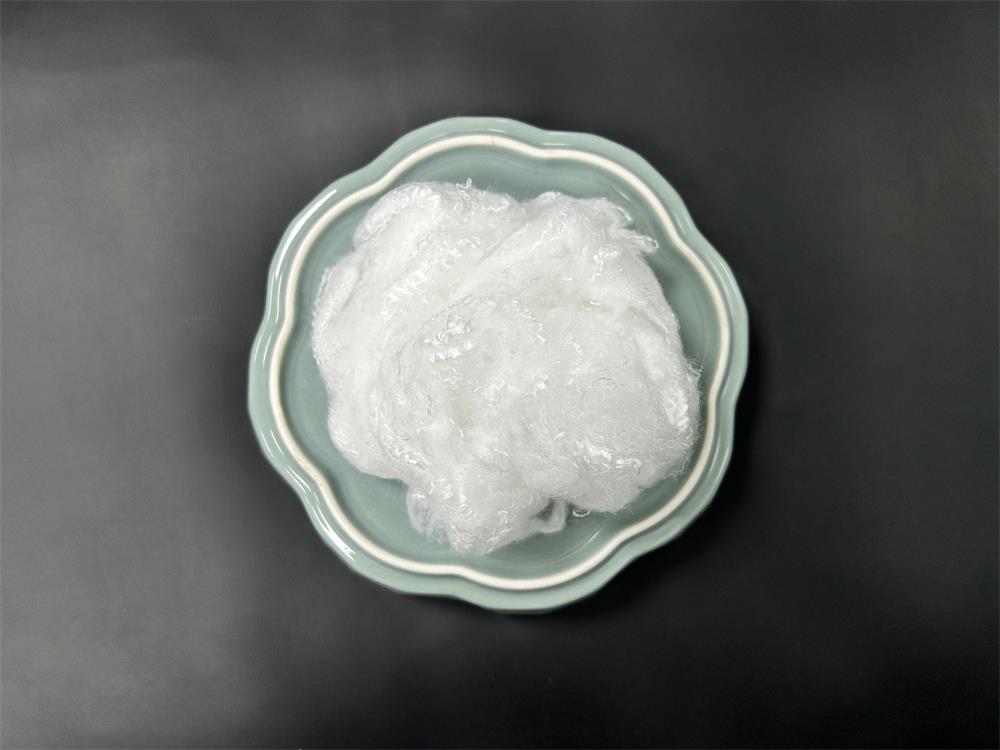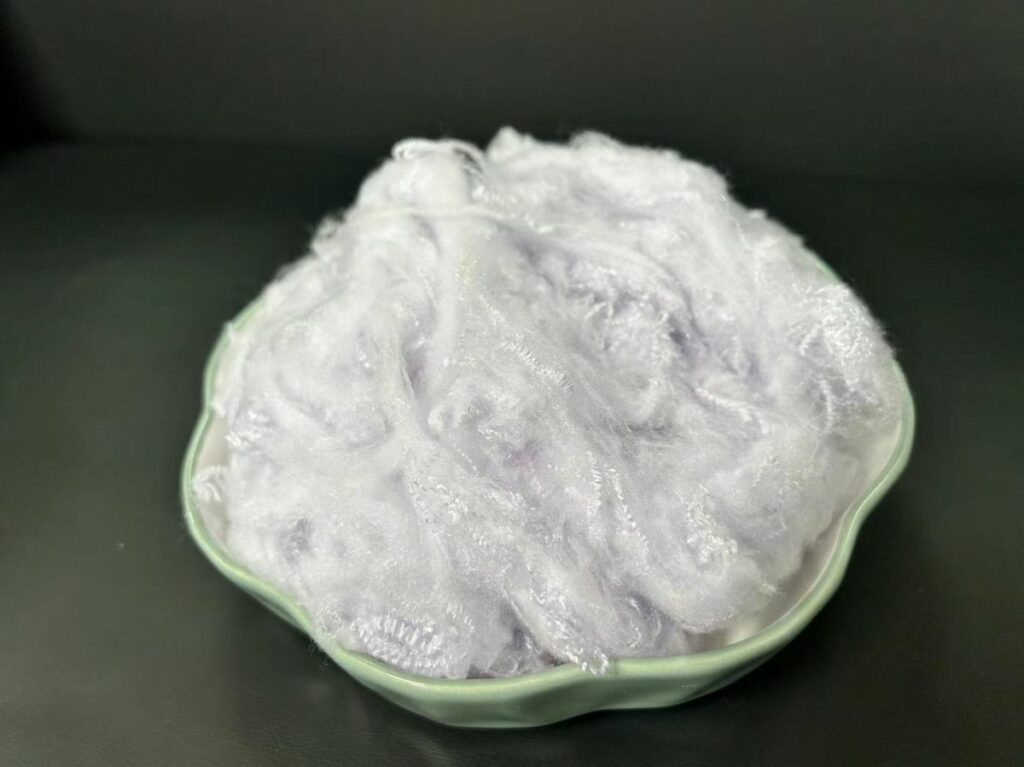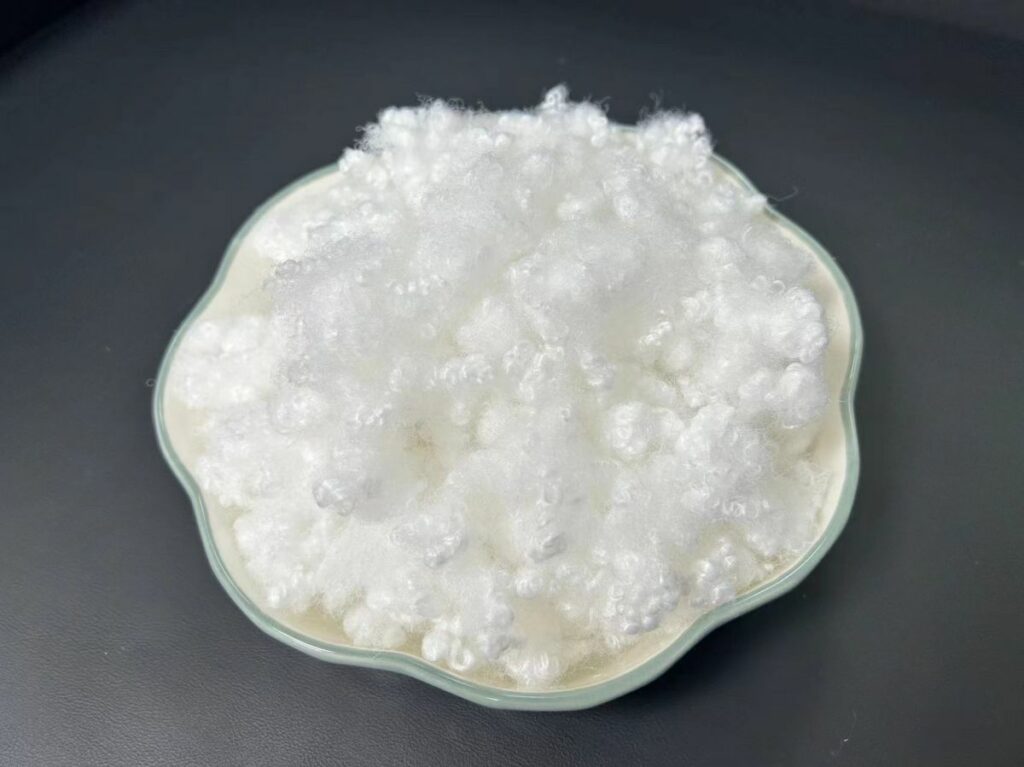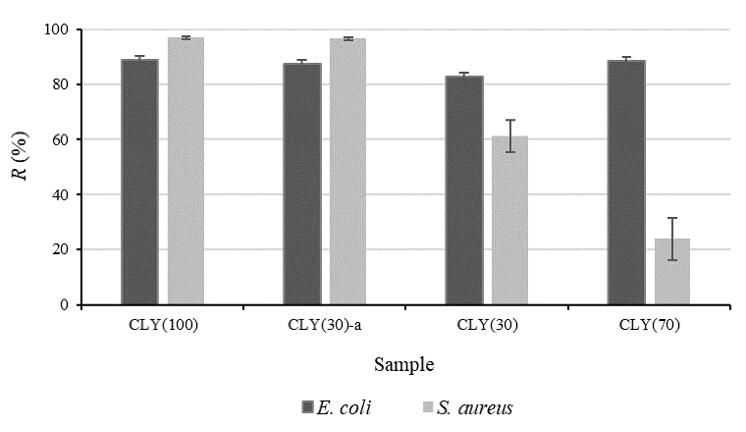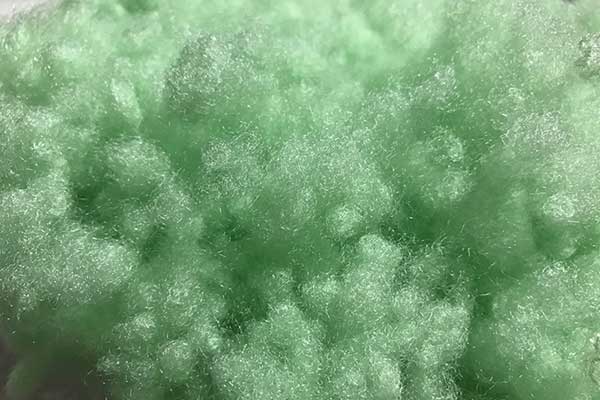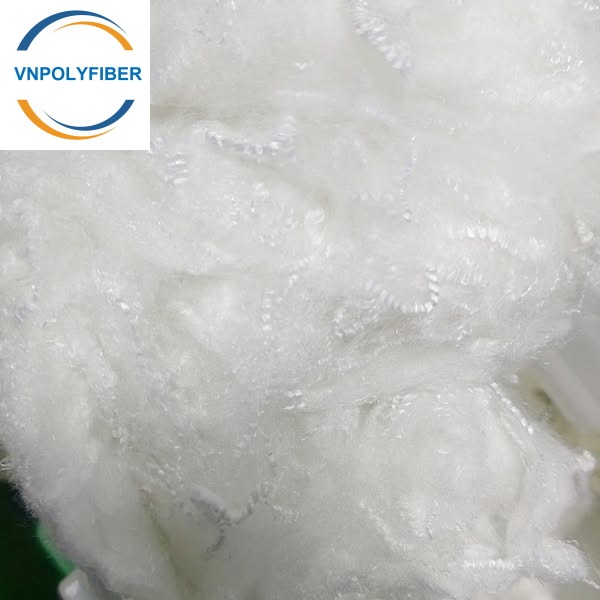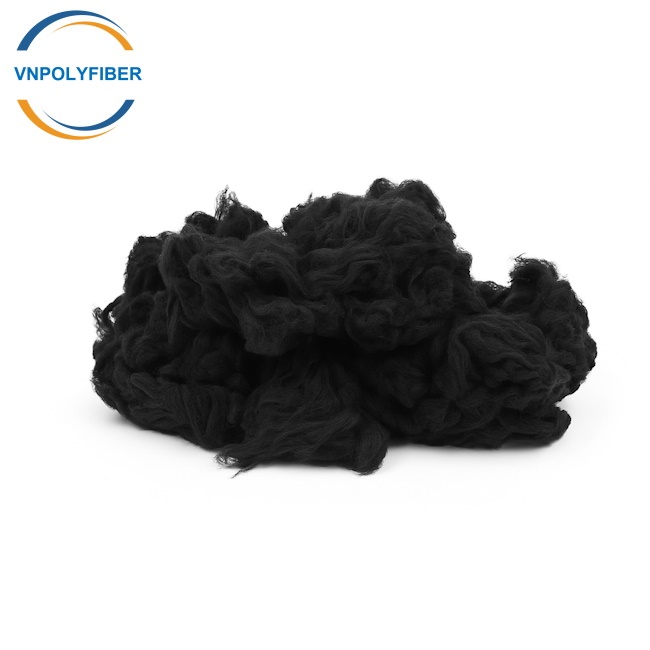Antibacterial fiber
- The antibacterial function of this fiber is achieved through specialized technology that inhibits bacterial growth on the fiber surface.
- This function effectively restricts bacterial proliferation on the fiber surface, thereby reducing the risk of bacterial transmission and infection, thus presenting significant application opportunities in textiles and filling materials, offering users a cleaner and more hygienic experience.
PRODUCT DETAIL
Antibacterial polyester staple fiber material is a polyester staple fiber product endowed with antibacterial capabilities, presenting ample application potential and market demand, offering healthier and cleaner alternatives across various sectors.
Antibacterial fiber is a modern functional fiber produced by incorporating an antibacterial masterbatch and employing a distinctive procedure.
Antibacterial fiber exhibits resistance to methicillin, Staphylococcus aureus, and other pathogens. It possesses both antibacterial and bactericidal properties, effectively preventing infections.
Product characteristics: Comprehensive range of silver ions, zinc oxide, and elemental copper antibacterial properties; White in color, can be dyed; Endures wash cycles without compromising its permanent antibacterial attributes.
Polyester short fiber: Comprising polyester raw materials, this short fiber product boasts outstanding wear resistance, corrosion resistance, and elasticity, making it ideal for manufacturing various textiles and filling materials. It delivers excellent softness and elasticity, suitable for creating diverse textiles like bedding, apparel, and household items. Additionally, it serves as an optimal filling material for mattresses, cushions, sofa cushions, catering to diverse requirements in various sectors.
Technical Parameter
There are two methods of obtaining antibacterial fiber: the mixed type preparation involves blending heat-resistant inorganic antibacterial agents, such as ceramic powder containing silver, copper, and zinc ions, into polyester for spinning. The post-treatment type entails adding antibacterial agents to polyester fibers. This type of fiber finds wide applications in underwear, medical supplies, and home textiles.
1. Antibacterial fiber plays a crucial role in minimizing the transmission of germs and bacteria, particularly in high-traffic areas like hospitals, schools, and public spaces.
2. The effectiveness of antibacterial fiber in eradicating bacteria helps reduce the risk of infections.
3. It also effectively diminishes the presence of odor-causing bacteria, ensuring fabrics maintain a fresh and clean scent.
4. Being a natural fiber, antibacterial fiber is environmentally friendly and biodegradable.
5. Antibacterial fiber demonstrates durability and longevity, retaining its antibacterial properties even after multiple washes.
Extensively utilized in home textiles, medical and sanitary products, outdoor items, and other domains. In home textiles, it can be fashioned into bedding, towels, bathrobes, among others, cultivating a clean and cozy living environment for users. In the realm of medical and health products, it can be crafted into medical masks, apparel, surgical towels, etc., effectively thwarting bacterial spread. For outdoor products, it can be utilized in tents, sleeping bags, backpacks, offering a healthy and comfortable experience during outdoor endeavors.
Classification
- Natural Antibacterial Fiber
Natural antibacterial fiber material itself has antibacterial properties and can be directly processed into fibers. Examples are chitin fiber, chitosan fiber, hemp fiber, bamboo fiber, etc. - Artificial Antibacterial Fiber
Antibacterial agents are added to ordinary fibers that do not have antibacterial properties to make them into fibers with antibacterial functions. Common fiber matrix categories are polyester, acrylic, polypropylene, nylon, etc. Commonly used antibacterial agents include inorganic antibacterial agents such as Ag, Cu, Zn ions and metal oxides, and organic antibacterial agents such as organometallic compounds, halides, isothiazoles, quaternary ammonium salts, and organic nitrogen compounds.
Antibacterial mechanism
Antibacterial effects are usually achieved by interfering with bacterial DNA, protein synthesis, or the activity of enzymes involved in bacterial cell metabolism. Antibacterial surfaces kill bacteria by releasing drugs, directly contacting cell membranes, or expressing cationic polymers, as summarized in the figure below. [1]
Three proposed mechanisms for inactivating microorganisms
Preparation
- Blended Spinning Method
The antibacterial fibers are obtained by blending the antibacterial agent with the polymer by techniques such as solution spinning or wet spinning. The method makes the inside of the fiber contain antibacterial agent, resulting long-term bacteriostatic and bactericidal effects. - Post-Processing Method
The antibacterial agent is attached to the surface of the fiber by spraying or dipping and post-processing. This method requires less amount of antibacterial agent and lead to less impact on the properties of the fiber. - Ion Exchange Method
Fibers with ion exchange groups can replace a layer of ions with antibacterial properties on the fiber surface through ion exchange reaction. Long-lasting antibacterial effect is achieved due to the formation of ionic bonds between the metal ions and the ion-exchange groups of the fibers.
Applications
Antibacterial fiber can sterilize and inhibit bacteria, and can also eliminate odor caused by bacterial reproduction, slow down the rate of fiber decay, and prevent the spread of certain diseases. Antibacterial fibers are mainly used in medical, health, food, and pharmaceutical industries. They can be used as gauze, bandages, surgical cloths and other medical supplies, underwear, children’s clothing, air conditioning filtration, water purification and other purification equipment, as well as antibacterial work clothes.
Research Information
Domen Malis et al. investigated the effect of ZnO on the antibacterial activity of cellulose fibers and their biodegradation. In this work, the researchers determined the antibacterial activity of fiber samples against Gram-negative Escherichia coli and Gram-positive Staphylococcus aureus bacteria. The results showed that the fiber composition in the samples had a great influence on its antibacterial activity. CLY fibers blended with CV exhibited high antibacterial activity against both Escherichia coli and Staphylococcus aureus. [2]
Reduction, R, of E. coli and S. aureus for different CLY fiber samples.
Video
FAQ
1. What do you offer?
We produce recycled hollow conjugated siliconized and non-siliconized polyester staple fiber mainly.
We also supply home textile machineries and products at factory origin and its price.
2. What is it used for?
Our fiber is widely used in filling, non-woven fabric, spinning, bedding stuff, home textile, automotive interiors…
3. Are you a factory or a trading company?
We are a factory specialized in polyester staple fiber for many years but now we also have our own professional trading company. We will source many types of textile products such as yarn, PP fibers from others to supply our own customers as well. We also provide our own customers with other related products such as: Foam, Pillows, Cushions, Toys, Down/ Feather,…
4. Where is your factory location?
Our factory locates in the north and the south of Vietnam. You can visit us from Ho Chi Minh City and Hanoi City, Vietnam. You could contact our salesman to fetch you if visiting.
5. Can you accept free sample?
Yes, the hand sample is free when not exceed 1 kilograms. Upon price confirmation, we will provide a sample within 2-3 days; the freight cost will be charged to client.
6. Can you provide ODM service?
Yes, we work on ODM orders. Which means size, material, quantity, design, packing solution, etc, will depend on your requests, and your logo will be customized on our products.
7. How about your quality? What’s the minimum order Quantity (MOQ)?
Please try a trial order, you will know it. The MOQ is 23,000 Kilograms/order, but the price will be lower if you order bulk volume.
8. Can I mix different items in one order?
Sure, you can mix any products we can provide.
9. How can you guarantee the product quality?
We have experienced QC team. We control not only productive process but also raw material. In addition, we have different kinds of testing instrument to help us guarantee the product quality.
10. What’s the payment terms?
L/C at sight, 30% TT in advance are mostly accepted; other terms shall be negotiable by both sides
For more information, please feel free to contact :
Mr. Tony Tan
Mobile number: +84 90 466 5251 (Whatsapp/Wechat/Viber/Signal)

